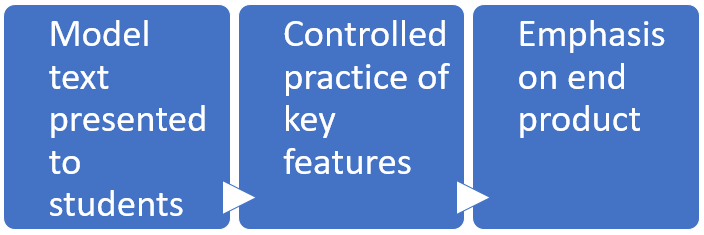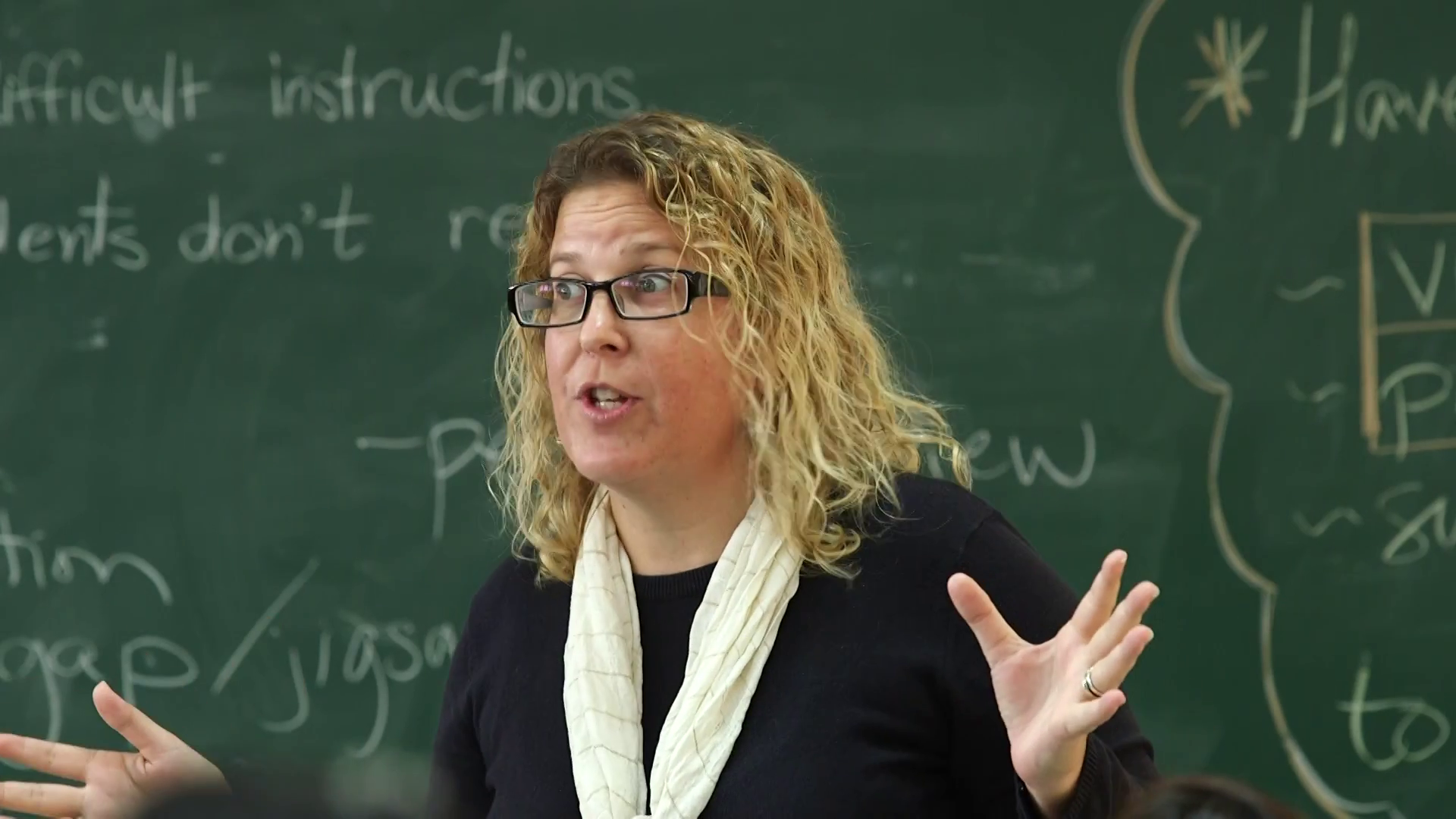Plagiarism is, unfortunately, a part of just about every secondary English language course, no matter in which country you work, and no matter if your context is a language school, an international school, or the mainstream sector. Plagiarism is not confined to one age group – I’ve spotted plagiarism in students’ work from the primary range to the academically-you-should-know-better, but here I will focus on secondary, a level that I feel has been neglected when plagiarism is discussed.
We can blame different cultures (*they* encourage memorization and copying), or modern technology (in *my* day, we didn’t have ctrl-c / ctrl-v), or point fingers at other teachers (the teachers my students had before didn’t teach them correctly) but by tolerating any form of copying, we do our students the worst disservice possible. This is especially true with secondary ELT students, where writing helps me as a teacher ascertain whether specific sub skills and language systems are being used successfully, which can have immediate consequences on how a student is evaluated. Furthermore, plagiarism wastes my time from lesson plan to assessment – I may spend hours on developing learning tasks that won’t result in any actual learning if the students don’t do the work themselves.
While there is a lot of information to be found on dealing with plagiarism, much of it seems geared towards academic English – obviously important, but beyond most secondary students’ and teachers’ immediate needs. In a private language school, it’s unlikely that the secondary students are writing academic papers. Instead, they are doing projects, movie reviews, group presentations or posters. Even in mainstream education, there may be 1 or 2 short essays in a term and they most likely won’t be research-based using the APA citation system.
With secondary level ELT students, writing is often a consolidation of language and sub skills from end of module reviews, such as a module on holidays ending with an email to a friend. Or a longer group project with a presentation. Or, say, language input on adjectives, consolidated with a description of what a person in a photo is wearing or a crazy in-class fashion show. And, it is here that we must try our best to detect and prevent plagiarism.
Detecting and monitoring
Plagiarized text is not always easy to detect, but there are some clear indicators that a text has been copied, especially digitally:
- Inconsistent language use, including lexis that is beyond your students’ current level;
- Idioms or cultural references that are outside your students’ funds of knowledge;
- Page layout (if word processed), including different fonts, text size or strange spacing. Hyperlinks – which indicate that a chunk of text has been copied from a website – will have a blue underline;
- Non-sequiturs or sentence fragments – which can also be found in oral presentations.
There is the argument that students themselves are unaware of what plagiarism is – especially at this age. However, ignorance is not innocence, especially when the assumption is that you won’t get caught, or that your teacher won’t notice – and this is also far too common. In a recent high school visit, I looked over the in-class ‘Work of the Week’ bulletin board exhibiting “student-work” that still had the underlined Wikipedia links in blue on the page, and these were being displayed with pride.
And even the most aware teacher can miss the signs of copied work. One recent example I had was an in-class instruction writing activity. Students chose a task (i.e. making a sandwich) and wrote basic sequenced instructions. One group chose to write about a make-up technique that started with “Whether it’s for a night on the town or to inject drama into your usual routine, a smoky eye is a sure-fire way to get all eyes on you!”. It was easy to detect as the average 12-year-old student doesn’t write like a YouTube makeup tutorial, and is extremely unlikely to be going ‘out on the town’. I caught this group out because I was monitoring very closely (obviously not closely enough to catch the smartphone under the table, though….). As busy teachers, we do not always have time to catch and follow-up on every instance of copying that takes place. And this is why learner training to prevent plagiarism needs to be our key focus with this age-group.
Preventing Plagiarism
1. Choose Process over Product
Most of our students aren’t lazy – but many have been trained by school systems, teachers and families to value a high result or the impossible goal of perfection over the trial and error of learning. If a teacher doesn’t detect or react to copied text, a vicious cycle can start whereby students who have plagiarized are rewarded with a higher mark, undermining a student’s confidence in their own ability and leading to more copying.
In a Product-based system, the focus is on creating the perfect project / poster / essay, and not on the steps that lead towards it. This makes it easier, and more tempting, to simply plagiarize:

In a Process-based system, however, the focus shifts to encouraging the students to acquire more transferable skills, to collaborate, and to become more personally engaged in the creation process:

Teachers may (accurately) point out that the process-based writing will take more class time to achieve the result. To my mind, however, spending two hours on process-writing is worth much more in learning, effective use of class time, and language / sub skills growth than one hour on a product that will be copied and pasted with no learning actually happening for the student.
2. Consider topics and actual outcomes – and adjust as necessary
Typical writing tasks are easily copied. For example, if students are asked to write a biography of a famous person, the temptation to copy the star’s Wikipedia page will be very strong. To stay one step ahead, break the task down to its language / sub skills components and decide if it can be done differently. For example, a few years ago a coursebook consolidation activity asked students to describe their hometown. There was a lot of embedded language including phrases for describing a place and locations. My 11-year-old students dutifully handed in copied Wikipedia entries for their hometown, and I knew I needed to adjust the task without losing either the theme or the language. In this case, it was an easy tweak: change the wording from ‘hometown’ to ‘neighbourhood’, which individualized the task so students could neither copy from each other nor ctrl-c from Wikipedia.
After a few years in ELT, we do start to see similar topics cropping up in coursebooks and curricula. I carried out an experiment with Google where I looked up the frequency of certain topics when combined with the word ‘essay’. A common topic like social media (Query = social media + essay) had nearly 24 million results. I tried with a more controversial topic (terrorism + essay) and got 16 million results. I switched to more personal themes (my favourite book + essay) and ended up with 11 million results!
3. Reading -> Choose creativity over book reports
Adjusting the task is also useful for skills beyond writing. As a student yourself, didn’t you ever look for the short summary version of the assigned novel from your English class? If creative literature is a part of your curriculum, something other than an easily-copied book report or a superficial ‘read and answer comprehension questions’ worksheet will circumvent this. With a group of Canadian 10th graders, I assigned different short stories to groups of students (to be read in class) who were tasked with presenting their story as a video, in-class skit or graphic novel. Once the works had been presented, the students then had the opportunity to read each other’s assigned stories and compare the adaptation with the original. In this way, more students read and understood each story, and I wasn’t stuck with the time waster of correcting copied-from-the-internet reports.
4. Starting research – infographic over essay
It is our responsibility as educators of teenagers to raise our students’ awareness of how to avoid copying and plagiarism, and the lower secondary age group is a prime place to start. Instead of asking for an essay, however, we can change the format to an infographic where facts and information can be presented in a bright, creative, child-friendly format with a listing of sources included. These are the small steps towards the more academic work that will be expected of our students in the future.
Preventing plagiarism is about staying a step ahead of your students, and selecting tasks that will make copying a less interesting alternative. It also means having to care to notice, to follow-up, and to empower and encourage our students to do the work themselves. And if we don’t teach our students how to avoid plagiarism, who will?

